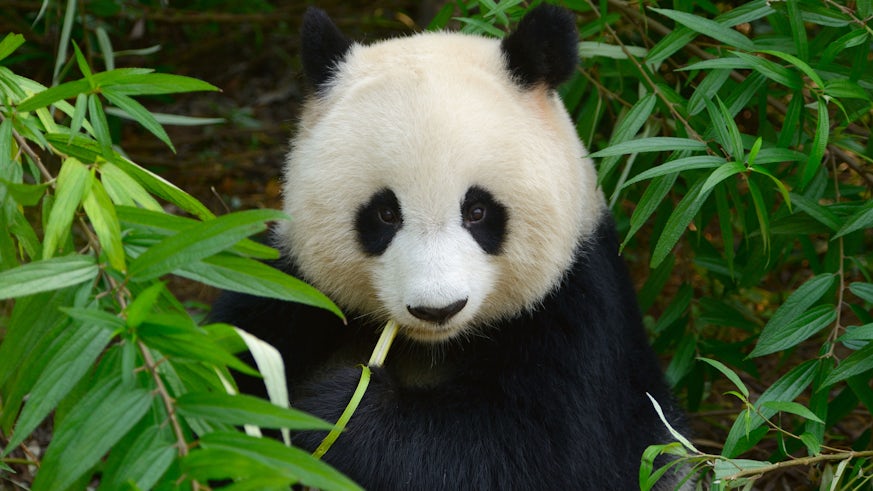Expense of creating giant panda reserves dwarfed by the income they generate
2 July 2018

Protecting the giant panda and its habitat yields up to 27 times the cost of its conservation, new research shows.
Professor Mike Bruford of Cardiff University was part of a team of researchers who worked to assess the financial benefits to humans brought about by the giant panda nature reserves in China. They estimate the overall value could be as much as US$6.9bn a year.
Today, there are 67 panda reserves in China, covering 54.7% of their habitat. The protected areas have many uses. Local farmers use the land to graze animals and grow crops. The research found farmers living close to reserves earned 8% more annually than farmers who did not. Maintaining flourishing ecosystems also means less environmental costs; it reduces the chances of flooding and means the soil retains nutrients.
An icon of endangered species everywhere, the panda has widespread international appeal. The team assessed the cultural value of the reserves, such as the trade brought in by tourists visiting China and the huge numbers of commercial products bearing the panda’s image that sell around the world.
The figures, collected for every decade from 1980 to 2010, also showed a steady rise in income as the number of pandas increased.
Professor Bruford, of the Sustainable Places Research Institute and School of Biosciences, said: “There are those who argue that spending time and money on saving endangered species is wasteful. But the wider value of these ‘flagship’ species is clear from this research.
Efforts to boost panda numbers are deemed to have been successful, with the species’ conservation status having recently been changed by the IUCN from ‘endangered’ to ‘vulnerable’ as numbers continue to increase. Protecting their habitats has also helped a wide range of other animals, with the biodiversity of these reserves among the highest in the world.
Researchers are calling for conservation efforts to be expanded.
“The panda has been brought back from the brink of extinction but that doesn’t mean more can’t be done to ensure it thrives,” said Professor Bruford. “Our calculations present a compelling financial case for increasing the areas of these reserves. The giant panda is an excellent example of how conservation can benefit everyone.”
The Value of Ecosystem Services from Giant Panda Reserves, is published in Current Biology.

